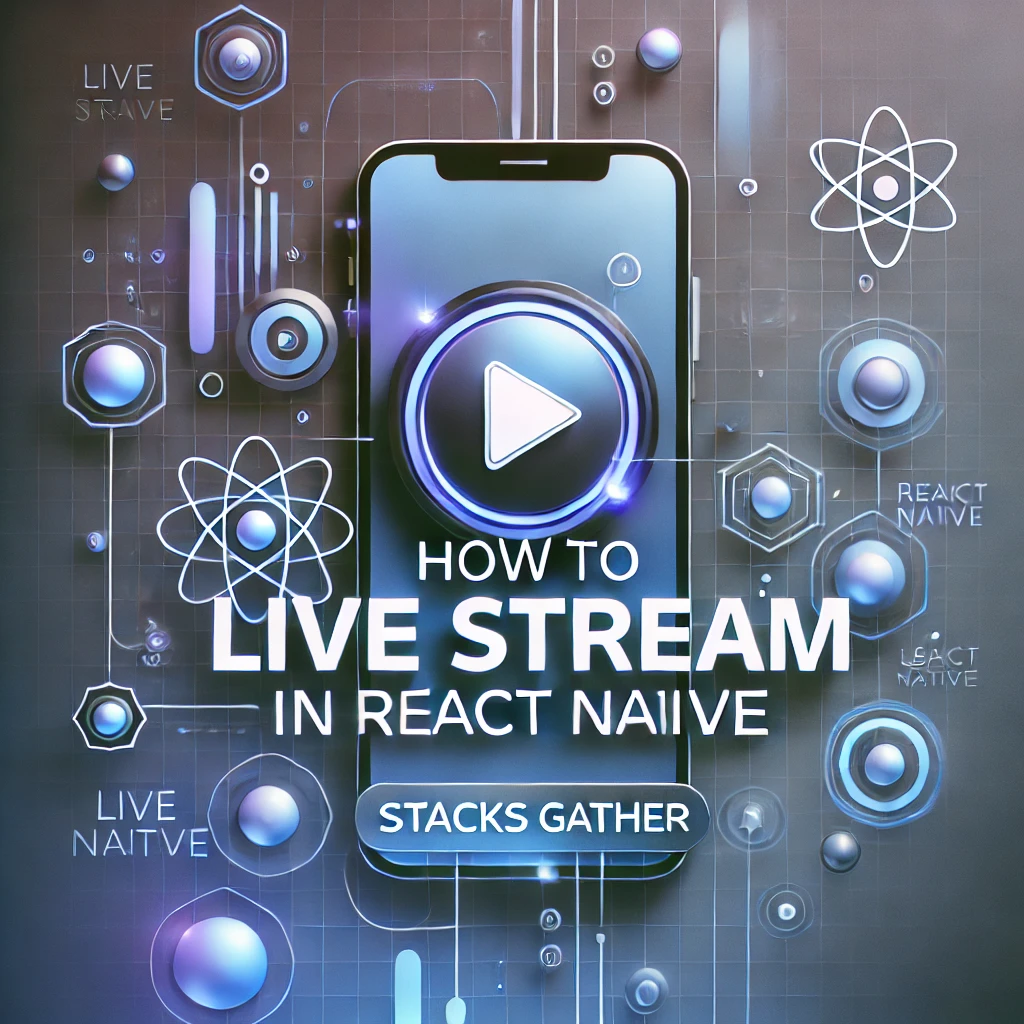How to Live Stream in React Native
Live streaming allows users to capture audio and video in real-time and broadcast it to a server for distribution. In React Native, we can use FFmpeg to process and stream multimedia content efficiently.
Techno solution
Share Article

Live streaming in mobile applications is becoming more popular, enabling users to broadcast real-time content seamlessly. For React Native developers, implementing live streaming functionality is achievable with the powerful media tool, FFmpeg. In this guide, we’ll cover how to set up live streaming in a React Native app using FFmpeg.
Table of Contents
- Introduction to Live Streaming in React Native
- Prerequisites
- Setting Up FFmpeg in React Native
- Implementing Live Streaming with FFmpeg
- Handling Stream Quality and Performance
- Troubleshooting Common Issues
- Conclusion
- References
Introduction to Live Streaming in React Native
Live streaming allows users to capture audio and video in real-time and broadcast it to a server for distribution. In React Native, we can use FFmpeg to process and stream multimedia content efficiently. FFmpeg is a powerful command-line tool that handles encoding, decoding, and streaming. By using the FFmpeg library, we can configure and manage the live streaming functionality in a React Native app.
Prerequisites
Before diving into the code, ensure you have the following:
- Node.js and React Native set up on your machine
- A basic understanding of React Native development
- FFmpeg installed on the development environment
- React Native FFmpeg package (e.g.,
react-native-ffmpegor@ffmpeg/ffmpeg)
Setting Up FFmpeg in React Native
To implement FFmpeg in React Native, you need to install an FFmpeg library for mobile. The react-native-ffmpeg package is an ideal choice for video processing on Android and iOS.
Step 1: Install the React Native FFmpeg Package
Run the following command in your React Native project directory:
npm install react-native-ffmpeg
Or if you prefer yarn:
yarn add react-native-ffmpeg
Step 2: Configure FFmpeg for iOS and Android
After installation, link the package if needed (React Native version <0.60) or use CocoaPods for iOS:
cd ios
pod install
Step 3: Import FFmpeg into Your Component
In the component where you want to handle live streaming, import FFmpeg:
import { FFmpegKit, FFmpegKitConfig } from 'react-native-ffmpeg';
Implementing Live Streaming with FFmpeg
Now that FFmpeg is integrated, we can set up live streaming. In this example, we’ll use a sample RTMP (Real-Time Messaging Protocol) server URL to stream data. You can replace it with your streaming server URL.
Step 1: Set Up a Function to Start Streaming
Define a function, startStreaming, that initializes FFmpeg to capture and stream live video and audio from the device’s camera and microphone.
import { useEffect, useState } from 'react';
import { View, Button, Alert } from 'react-native';
import { FFmpegKit } from 'react-native-ffmpeg';
import { Camera } from 'react-native-camera';
const LiveStream = () => {
const [streaming, setStreaming] = useState(false);
const RTMP_URL = 'rtmp://yourserver.com/live/stream'; // Replace with your RTMP server URL
const startStreaming = async () => {
// FFmpeg command to capture and stream video/audio in real-time
const ffmpegCommand = `-f android_camera -i 0:0 -c:v libx264 -preset veryfast -b:v 3000k -c:a aac -f flv ${RTMP_URL}`;
FFmpegKit.execute(ffmpegCommand)
.then((session) => {
console.log('Streaming started');
setStreaming(true);
})
.catch((error) => {
console.error('Error starting stream:', error);
Alert.alert('Error', 'Failed to start streaming.');
});
};
const stopStreaming = () => {
FFmpegKit.cancel();
setStreaming(false);
console.log('Streaming stopped');
};
return (
<View>
<Camera style={{ flex: 1 }} />
{streaming ? (
<Button title="Stop Streaming" onPress={stopStreaming} />
) : (
<Button title="Start Streaming" onPress={startStreaming} />
)}
</View>
);
};
export default LiveStream;
Explanation of the FFmpeg Command
-f android_camera: Captures the video from the Android camera.-i 0:0: Input stream for audio and video; varies by device.-c:v libx264: Specifies the codec for video compression.-preset veryfast: Adjusts the encoding speed (higher speed might reduce quality slightly).-b:v 3000k: Sets the video bitrate for streaming quality.-c:a aac: Specifies the codec for audio compression.-f flv: Specifies that we are sending an RTMP (Flash Video) stream format.
Note: Adjust the command parameters as needed based on your server settings, bitrate, and device compatibility.
Handling Stream Quality and Performance
Streaming quality can impact bandwidth and device performance. Here are some tips to optimize it:
- Adjust Bitrate: Higher bitrates improve quality but increase data usage. Test with different bitrates (e.g.,
3000k,1500k, etc.). - Resolution: Streaming in 720p or lower reduces the load on mobile devices. Use
-s 1280x720to set resolution. - Frame Rate: Adjust frame rates based on requirements. Lower frame rates (e.g., 24fps) can be smoother and reduce performance strain.
Troubleshooting Common Issues
Here are some common issues you might encounter:
- Camera Permission Issues: Ensure you have the necessary camera and microphone permissions in both
AndroidManifest.xmlandInfo.plistfor Android and iOS, respectively. - Connection Errors: Check your RTMP server URL and network connection. Some networks block RTMP ports, so testing with an open network is recommended.
- Device Compatibility: Not all devices support
android_camerainput. Test on different devices and adjust-iinput parameters.
Conclusion
Implementing live streaming in React Native using FFmpeg allows you to leverage a powerful media processing library to capture and broadcast real-time content. By setting up the appropriate FFmpeg commands, configuring permissions, and optimizing streaming parameters, you can deliver high-quality, real-time streaming experiences directly within your mobile app.